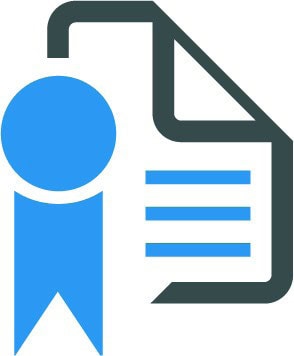212
Instructor’s Guide – Can You Hear Me…Ebola Risk
Overview:
This story highlights how inefficient assessment and engagement with the patient and their issues can lead to extraordinary consequences for the patient and the staff. One missed step in the assessment process can possibly lead to deadly viral contamination for healthcare providers. Implementation of standard precautions, such as determining risk for Ebola, should be everyone’s concern, including implementing procedures that inform or train staff returning from vacation or other types of leave of absences, when critical training is missed.

Primary Learning Outcomes
After completing this lesson, the student will be able to:
- Explain the importance of analyzing a patient’s condition by conducting a thorough assessment including making eye contact and reading body language.
- Demonstrate a structured patient handoff including a verbal check-back from the team member receiving the patient.
- Design a team structure that ensures the team leader is not pulled away from coordinating care across the unit.

QSEN Pre-Licensure Competencies
The following QSEN competencies are addressed in this lesson:
- Patient-Centered Care: Recognize the patient or designee as the source of control and full partner in providing compassionate and coordinated care based on respect for patient’s preferences, values, and needs.
- Teamwork and Collaboration: Function effectively within nursing and inter-professional teams, fostering open communication, mutual respect, and shared decision-making to achieve quality patient care.

QSEN Teamwork & Collaboration Enrichment
TeamSTEPPS® Best Practice: Briefs, Handoff, and Check-Backs
TeamSTEPPS (Team Strategies and Tools to Enhance Performance and Patient Safety) is an evidence-based set of teamwork tools, aimed at optimizing patient outcomes by improving communication and teamwork skills among health care professionals.
- A brief is a short session prior to start to share the plan, discuss team formation, assign roles and responsibilities, establish expectations and climate, and anticipate outcomes and likely contingencies.
- A handoff is the transfer of information (along with authority and responsibility) during transitions in care across the continuum. It includes an opportunity to ask questions, clarify, and confirm.
- A check-back is a closed-loop communication strategy used to verify and validate information exchanged. The strategy involves the sender initiating a message, the receiver accepting the message and confirming what was communicated, and the sender verifying that the message was received. Typically, information is called out anticipating a response on any order which must be checked back.
Students will answer reflection questions upon completing the story. These questions are aligned with the QSEN competencies and are designed to help the student reflect on both the content of the story and the QSEN competencies addressed by the story.
*Following each question are some potential answers
- After reading the story, discuss strategies for identifying and managing overlaps in team member roles and the things they’re accountable for. How could the Nurse Leader/Manager/Administrator better prepare Nurse Hansen to return to his duties after vacation and missing critical training?
A: One way is to given Nurse Hansen a quick in service regarding the necessary information he may have missed while out on vacation. Another is to have him read the notes from the last meeting to ensure he is aware of any changes.
- How could the health care team improve their response and treatment of this patient? Did they follow precaution protocols accurately? Why or why not?
A: This patient should have been asked about any recent travel to ensure a variety of contagious disease are not spread within the ER. Although Nurse Hansen did not follow the appropriate protocol the other health care team members did. This will help to reduce the risk of spreading contagious disease to other health
care team members or patients.
Discussion Questions:
Use discussion questions for face to face or online discussion boards to get students to further reflect on the content of the story together.
*Following each question are some potential answers
- What can we learn from this story?
A: All team member need to accountable for their actions and decisions. In this story, Nurse Hansen put himself, along with everyone in the ER, at risk of exposure to Ebola.
- What could this team do to improve the way they coordinate care across teams especially when workload increases?
A: One way is to meet with the people involved in the error and to emphasize the need to learn and grow from the situation. It is then a good idea to reflect on what happened and potential options to take in the future. This should not be used as a punishment, but as a way to learn a different way of providing care to the patient
- What one thing can you do to ensure you provide a thorough report and safe handoff for every patient?
A: A thorough report and safe patient handoff is important in providing safe patient care. This can be done by implementing SBAR any time a patient leaves the floor and during change of shift report. Another way is to use briefs, huddles, or debriefs to ensure all health care team members are aware of the patient’s
condition and the plan of care.
These activities can be tailored for individuals or groups in a face to face or online setting.
- Write a one page summary of the impact this story might have on the ED. Include how you might react if in a similar situation. Students are provided an opportunity to examine the CDC Ebola guidelines.
- Students are designated into breakout groups and each group is give a healthcare role to discuss within their group (such as, group 1 discusses impact of the story as it concerns Nurse Hansen/intake team, group 2 discusses impact as it concerns treatment team, group 3 discusses impact on healthcare sanitation team, etc.) Each group is responsible for writing down 5 errors they recognize. The groups are asked to share and discuss perspectives and concerns.
- Students are asked to describe a structured hand-off procedure that would provide improved communication during transitions in care for this patient.
- Students are asked to describe a team structure that would allow the leader/manager to focus on primary duties and not get involved in lower priority tasks.

Measuring Student Mastery:
| Learning Outcome | Level 1 | Level 2 | Level 3 |
| Explain the importance of analyzing a patient’s condition by conducting a thorough assessment including making eye contact and reading body language. | Student struggles to explain the importance of analyzing a patient’s condition by conducting a thorough assessment including making eye contact and reading body language. | Student can explain the importance of analyzing a patient’s condition by conducting a thorough assessment including making eye contact and reading body language, but needs further practice. | Student can accurately explain the importance of analyzing a patient’s condition by conducting a thorough assessment including making eye contact and reading body language. |
| Demonstrate a structured patient handoff including a verbal check-back from the team member receiving the patient. | Student struggles to demonstrate a structured patient handoff including a verbal check-back from the team member receiving the patient. | Student can demonstrate a structured patient handoff including a verbal check-back from the team member receiving the patient, but needs further practice. | Student can accurately demonstrate a structured patient handoff including a verbal check-back from the team member receiving the patient. |
| Design a team structure that ensures the team leader is not pulled away from coordinating care across the unit. | Student struggles to design a team structure that ensures the team leader is not pulled away from coordinating care across the unit. | Student can design a team structure that ensures the team leader is not pulled away from coordinating care across the unit, but needs further practice. | Student can accurately design a team structure that ensures the team leader is not pulled away from coordinating care across the unit. |

For additional information on improving team communication, please consult the following articles and resources in Further Reading:
- TeamSTEPPS Essentials
- Inpatient Hospital Care
- CDC Guidelines/Protocols for Care of Potential Ebola Patients

Story-Specific Best Practices and Proven Tools:
In addition to the ideas generated by students and mentioned in the activities, there are established best practices that may be appropriate to introduce or reference during this lesson to support communication. Some best practices to consider for improving team communication include:
- 3 Ws- Who I Am, What I am Doing, and Why I Care
- Briefs/Huddles/Debriefs
- Check-Backs
- STEP
- SBAR
- Handoffs
- Collaboration
- “Speak Up”
